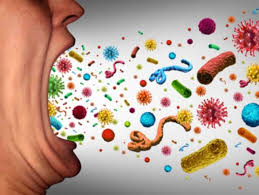The unfolding of mouth larva, also known as oral myiasis, is a sizable subject in cattle production and human fitness. Information about the factors that contribute to the spread of those parasitic infestations is important for implementing effective prevention strategies.
This text aims to explore the numerous ways in which mouth larvae unfold, highlighting the important factors concerned and discussing preventive measures that can assist in managing their transmission.
Fly Species and Lifecycle:
Mouth larva infestations are typical because of sure fly species, together with the commonplace housefly (Musca domestica), blowflies (Calliphoridae family), and screwworm flies (Cochliomyia hominivorax and Chrysomya bezziana). Those flies are drawn to decomposing organic memory, including animal carcasses, open wounds, and faecal material.
The lifecycle of these flies involves 4 degrees: Egg, larva (maggot), pupa, and person. The grownup flies lay their eggs on appropriate substrates, along with wounds or dirty fur. Once the eggs hatch, the larva feeds on the natural material gift, inclusive of living tissue, causing oral myiasis.
Factors Contributing to spread:
numerous factors contribute to the spread of mouth larva infestations. these include:
a. Bad sanitation and Hygiene:
Inadequate waste control practices, which include the accumulation of animal carcasses, unclean animal housing, and fallacious disposal of organic waste, create favorable situations for fly breeding and next infestations.
b. Wound Presence:
Open wounds, lesions, or sores on animals or humans provide an entry point for fly eggs to be deposited. These wounds can result from accidents, surgical strategies, or current infections.
c. Overcrowding and Strain:
Overcrowded living situations and stress weaken the immune devices of animals, making them greater liable to mouth larva infestations. high stocking densities and negative ventilation can contribute to the spread of flies and infestations.
d. lack of veterinary care:
Insufficient admission to veterinary care, along with everyday check-united States of America and treatments, can result in untreated wounds or infections, increasing the hazard of mouth larva infestations.
e. Environmental Factors:
Environmental conditions, together with warm and humid climates, choose the survival and duplication of flies, increasing the likelihood of mouth larva infestations.
Prevention and Manipulate Strategies:
Stopping and controlling the unfolding of mouth larva infestations is important to reduce their impact on farm animal production and human health. here are some key preventive measures:
a. Right Husbandry Practices:
Imposing the right waste management, including regular elimination and disposal of animal carcasses and faecal fabric, can lessen fly breeding websites. Keeping easy and hygienic animal housing and environment also helps prevent infestations.
b. Wound management:
Prompt and right remedy of wounds in animals and human beings is essential to save you fly egg deposition. Normal inspection and cleaning of wounds, along with using appropriate antiseptics and dressings, can decrease the risk of infestation.
c. Fly management measures:
Enforcing fly management measures, which include the use of pesticides, fly traps, displays, and repellents, can assist in reducing fly populations and prevent infestations. Those measures have to be carried out both indoors and exterior, focusing on areas in which flies are most likely to breed and rest.
d. Veterinary Care and Tracking:
Everyday veterinary care, which includes vaccinations, deworming, and wound management, plays an essential role in stopping mouth larva infestations. tracking animals for signs of infestation and taking immediate movement can assist in controlling the spread.
e. Education and Awareness:
Increasing consciousness among farm animal farmers, veterinary specialists, and most people about the dangers and prevention of mouth larva infestations is vital. training packages and educational substances can help disseminate know-how and sell first-class practices.
f. Environmental Control:
Imposing environmental control measures, which include right drainage, ventilation, and waste control structures, can create an unfavourable environment for flies, lowering the risk of infestations.
In Summary:
Information about the factors that make a contribution to the unfolding of mouth larva infestations is essential for effective prevention and management. bad sanitation and hygiene, the presence of wounds, overcrowding, loss of veterinary care, and environmental factors all play a role in the transmission of those parasitic infestations.
By enforcing preventive measures inclusive of precise husbandry practices, wound management, fly management measures, veterinary care and monitoring, training and consciousness, and environmental management, the unfolding of mouth larvae may be minimized. This may now not be the most effective shield for livestock manufacturing but also guards human fitness from the detrimental impacts of those infestations.




